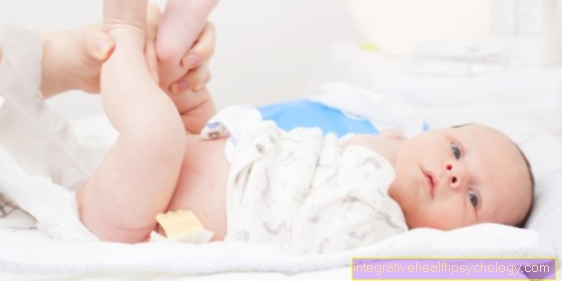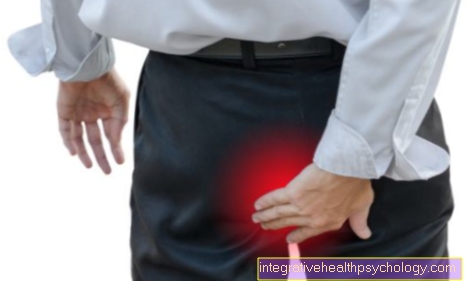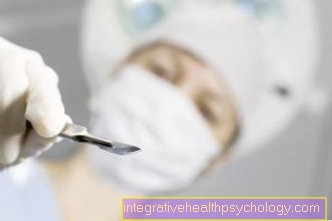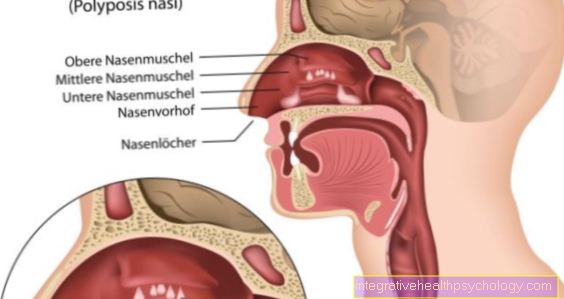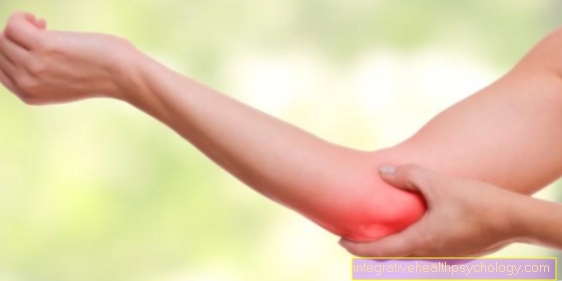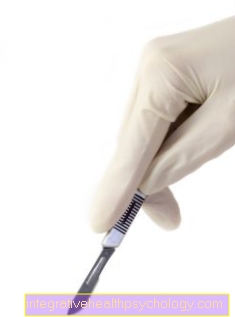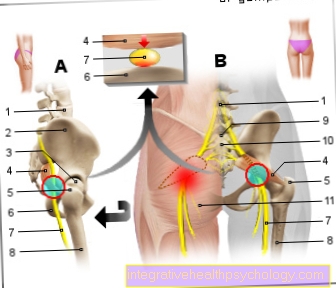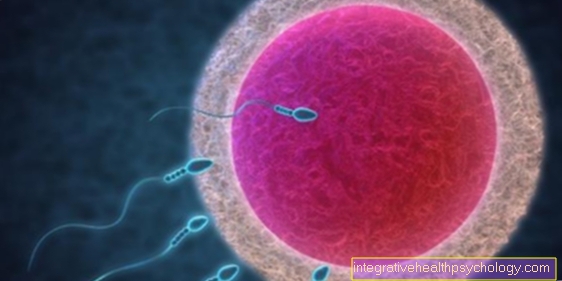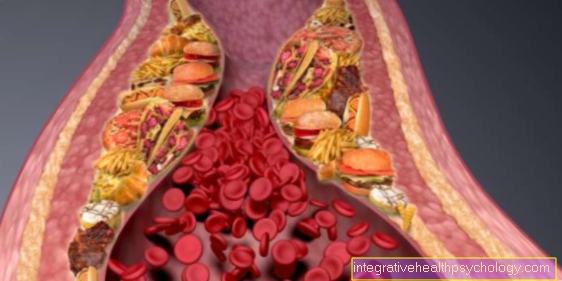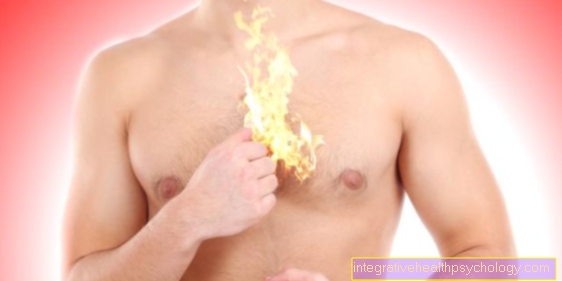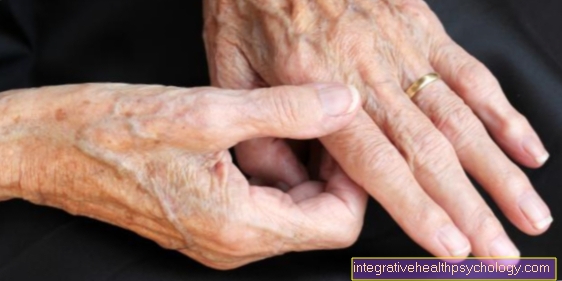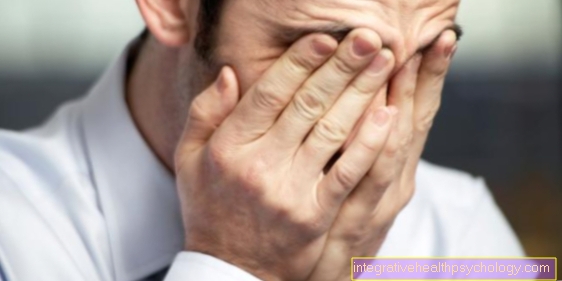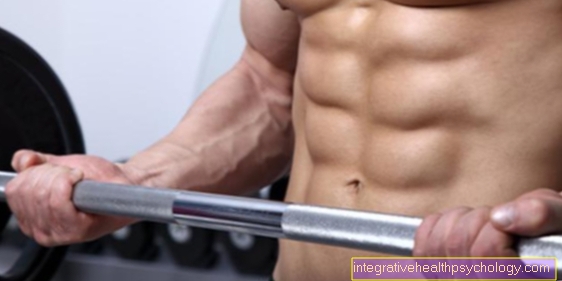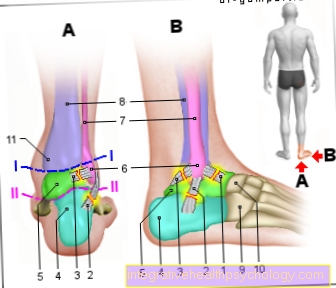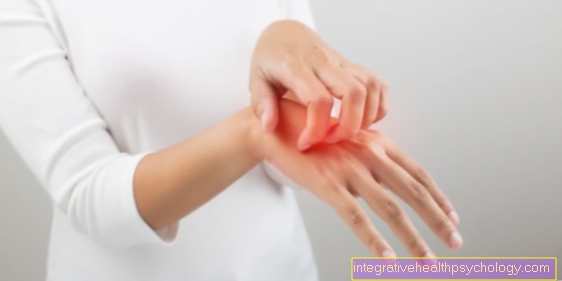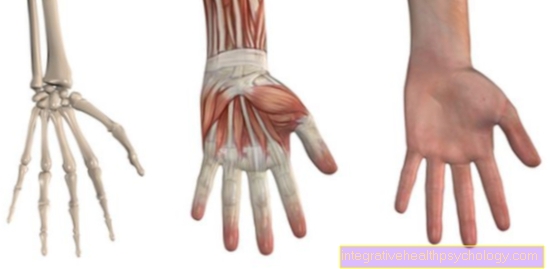Low Blood Pressure And Nausea - You Can Do That!
introduction
Many people suffer from low blood pressure. Often those affected are not aware of this. Nausea is a characteristic symptom accompanying low blood pressure. The reason for this lies in the blood flow to the gastrointestinal tract, which can decrease (briefly) if the blood pressure is too low. In addition to nausea, low blood pressure may be accompanied by other symptoms such as vomiting, dizziness or rapid heartbeat.
Read more on the topic:
- Blood pressure values - which are normal and which are not?
- Blood pressure - how do I measure correctly?

Why does low blood pressure cause nausea?
For the body, low blood pressure means that the entire cardiovascular system is working at a low level. The blood is pumped into the body through the heart and supplies the organs with oxygen-rich blood. With low blood pressure, the organs may be supplied with poorer blood in the short or long term. In addition to other organs, this also applies to the gastrointestinal tract. The result is that the food ingested is broken down and absorbed very slowly. The further processing of the food components and the transport along the gastrointestinal tract are disrupted. A long stay of the food in the gastrointestinal tract and a slow utilization of the food components cause nausea in the sick. At the same time, these complaints often lead to a reduced appetite in those affected, so that they generally consume less food. This can make the symptoms even worse.
Which accompanying symptoms still occur frequently?
Low blood pressure does not always cause symptoms. Serious symptoms typically occur when blood pressure is so low that organs such as the gastrointestinal tract or the brain are temporarily poorly supplied with blood. Reduced blood flow to the gastrointestinal tract often causes vomiting as well as nausea. If the brain is not supplied with enough blood for a short time, visual disturbances, pulsating headaches, dizziness, ringing in the ears and impaired consciousness leading to fainting can occur. People only pass out if their blood pressure drops very quickly.
If the blood pressure is permanently very low, symptoms such as fatigue, lack of drive and insomnia occur. Both short-term and long-term drops in blood pressure can cause cold hands and feet.
Read more on the topic: When does low blood pressure become dangerous?
Vomit
If the blood flow to the gastrointestinal tract is poor due to low blood pressure, the chyme is processed less quickly and the food components stay longer in the gastrointestinal tract. This often causes nausea in those affected. Nausea is usually a harbinger of vomiting. However, people with low blood pressure and nausea do not necessarily have to vomit.
However, vomiting is a possible symptom of low blood pressure and nausea. Vomiting is a kind of protective reflex of the body. He tries to get rid of the food in the other direction, i.e. to spit it out, since the transport to the rectum is disturbed. Vomiting is defined as the gushing emptying of the stomach contents. The stomach, diaphragm and abdominal muscles contract in order to carry the stomach contents into the mouth. The stomach acid often causes a burning sensation in the esophagus (heartburn).
diarrhea
Diarrhea is not a typical symptom of low blood pressure and nausea. In principle, low blood pressure leads to a slowdown in the activity of the gastrointestinal tract. In the case of diarrhea, on the other hand, the intestinal passage is pathologically accelerated. Diarrhea is a possible cause of acute circulatory disorders. Without electrolyte balance, severe diarrhea leads to a loss of salt and fluid in the body. When the body loses fluids, the body fluids are redistributed. The blood pressure decreases. This means that diarrhea is a possible cause of low blood pressure with the accompanying complaint of nausea.
Read more on the topic:
- Medication for diarrhea
- Diet for diarrhea
dizziness
Dizziness is a disorder of the sense of balance, in which those affected lose their physical security and subjectively feel the feeling of swaying or turning. Low blood pressure can lead to insufficient blood supply to the brain. If the brain is insufficiently supplied with blood, symptoms such as visual disturbances, ringing in the ears and dizziness develop.
Dizziness is also common in the orthostatic hypotension on. Those affected suffer a drop in blood pressure when suddenly getting up from sitting or lying down because the blood sinks in the legs. Dizziness and “blacking out” are the typical symptoms.
Read more on the topic:
- Dizziness in the morning
- Dizziness and blurred vision
- Dizziness on standing up
fast pulse / racing heart
A fast pulse, which those affected often describe as a racing heart, is a common symptom of low blood pressure. In principle, when blood pressure is low, too little blood flows through the body. The organs cannot be supplied with blood as well and cause unpleasant symptoms. To compensate for this, our body activates its sympathetic nervous system. The body tries to counteract the reduced blood flow by making the heart beat faster. In this way, the body tries to ensure that organ blood flow continues to be adequate. Those affected feel a rapid heartbeat and a distinct palpitation of the heart. The heart beats more than a hundred times a minute.
Read more on the topic:
- Increased pulse - when is a pulse considered too high?
- Dizziness and racing heart
- Palpitations at night - is that dangerous?
fatigue
Permanently low blood pressure leads to non-specific general symptoms such as fatigue, poor concentration and fatigue. The hypotension makes us weak. Those affected notice this because they need significantly more time in the morning to get going. They often feel listless and inefficient.
Read more on the topic: Always tired - what can I do?
a headache
If you suffer from low blood pressure, nausea and headaches, you should take the symptoms seriously. Sharp, pulsating headaches are a sign that blood flow to the head is reduced. Fresh air, drinking plenty of water, and taking a walk can help improve supplies to the brain in the short term. In the long term, blood pressure should be stabilized.
Read more on the subject at: Low blood pressure and headache
What can I do about low blood pressure and nausea?
Home remedies and lifestyle play a crucial role in low blood pressure and nausea. In acute symptoms, a bottle of water and fresh air can significantly help alleviate the symptoms. In the long term, a lifestyle change can have a positive impact on the symptoms.
When blood pressure is low, simple behaviors are often very effective. The measures start with diet and exercise. Regular sports units have a positive influence on blood pressure. Endurance sports such as jogging, swimming or cycling are particularly suitable. The diet should be balanced and contain enough salt. In contrast to the low-salt diet for high blood pressure, salt has a beneficial effect on blood pressure in hypotension. You shouldn't consume more than five grams of salt a day. It helps to have several small meals throughout the day.
Read more on the topic: Endurance sports at home and endurance sports and nutrition
Adequate fluid intake is very important with low blood pressure. Those affected should drink at least two and a half liters a day, preferably water and tea. A cup of coffee, green or black tea in the morning stimulates the circulation.
There are also drugs that effectively boost blood pressure. These are usually only used if there are pronounced symptoms, for example circulatory problems with dizziness, fatigue and visual disturbances. There is also the possibility of taking homeopathic remedies for low blood pressure. The effectiveness of these agents has not yet been proven, but there is also no evidence of damage from the ingestion of globules.
Medication
In most cases, drugs to increase blood pressure are only used if pronounced symptoms persist despite conservative therapy with home remedies. The drugs are called antihypotonic drugs because they counteract low blood pressure, hypotension. These include the mineral corticoids, for example the drug fludrocortisone, and sympathomimetics, such as the agent etilefrine. Before drug treatment is started, a precise diagnosis is important in order to find and treat a possible underlying hypotension disease.
Read more on the topic: Korodin drops
Home remedies
In addition to a salty diet with plenty of fluids and regular exercise, simple home remedies can be used to get the circulation going. When showering, you should alternately set the water to warm and cold and before you finish you should shower your body with cold water. The alternating shower effectively stimulates the blood vessels. In addition, you can massage the body with a brush, you can massage in the direction of the heart to stimulate the blood circulation. At night, lying on a pillow can help. If you have varicose veins, it can be helpful to wear support stockings or to wrap your legs with elastic bandages.
homeopathy
Homeopathic remedies can be taken as a supplement in case of low blood pressure and nausea. Common globules contain the active ingredients Pulsatilla, Nux vomica, Veratrum album, Acidum phosphoricum and Coffea.
In addition, rosemary is suitable as a tea, tincture or bath additive to get the circulation going.

